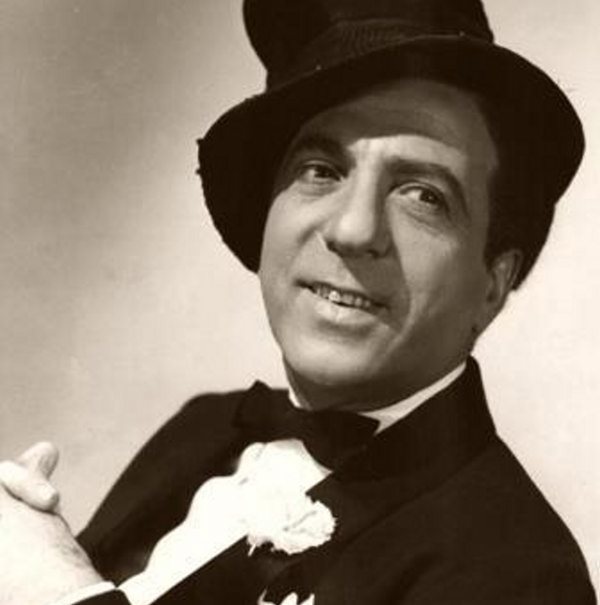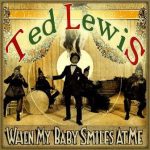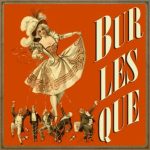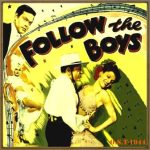TED LEWIS

Biography
Theodore Leopold Friedman, better known as Ted Lewis (June 6, 1890 – August 25, 1971), was an American entertainer, bandleader, singer, and musician. He led a band presenting a combination of jazz, hokey comedy, and schmaltzy sentimentality that was a hit with the American public. He was known by the moniker “Mr. Entertainment” or Ted “Is Everybody Happy?” Lewis. Lewis died of lung failure in August 1971.
Born in Circleville, Ohio, Ted Lewis was one of the first Northern musicians to start imitating the New Orleans jazz musicians who came up to New York in the teens. He first recorded in 1917 with Earl Fuller’s Jass Band, who were making an energetic if somewhat clumsy attempt to copy the sound of the city’s newest sensation, the Original Dixieland Jass Band. At the time, Lewis didn’t seem to be able to do much on the clarinet other than trill. (Promoting one recording the Victor catalog stated:”The sounds as of a dog in his dying anguish are from Ted Lewis’ clarinet”). He improved a bit later, forming his style from the influences of the first New Orleans clarinetists to reside in New York, Larry Shields, Alcide Nunez, and Achille Baquet.
By 1919, Ted Lewis was leading his own band, and had a recording contract with Columbia Records, which marketed him as their answer to the Original Dixieland Jass Band who recorded for Victor records. For a time (as they did with Paul Whiteman) Columbia gave him a special record label featuring his picture. At the start of the 1920s, he was considered by many people without previous knowledge of jazz (that is to say, most of America) to be one of the leading lights of hot jazz.
Lewis’s clarinet playing barely evolved beyond his style of 1919 which in later years would sound increasingly corny, but Lewis certainly knew what good clarinet playing sounded like, for he hired musicians like Benny Goodman, Jimmy Dorsey, Frank Teschemacher,and Don Murray to play clarinet in his band. Ted Lewis actually could play normally well (listen to his earliest records for an idea; no missed notes, for one). For years, his band also included jazz greats Muggsy Spanier on trumpet and George Brunis on trombone. Ted Lewis’s band was second only to the Paul Whiteman in popularity during the 1920s, and arguably played more real jazz with less pretension than Whiteman, especially in his recordings of the late 1920s.
Ted Lewis recorded for Columbia from 1919-1933. He was on Decca 1934 into the 1940s. In 1932, Lewis recorded “In a Shanty in Old Shanty Town”, which he had performed in the film “The Crooner” with his orchestra. It was released on a 78 and reached number one on the charts where it stayed for 10 weeks.
Lewis’s band got cornier and schmaltzier as the Great Depression wore on, but this seemed to match the general public’s taste, as he remained commercially successful during an era when many bands broke up. Through it all he retained his famous catchphrase “Is everybody happy?”. Lewis adopted a battered top hat for sentimental, hard-luck tunes (he called himself “the high-hatted tragedian of song”). Frequently he would stray from song lyrics, improvising chatter around them. This gave the effect of Lewis “speaking” the song spontaneously: “When ma’ baby… when ma’ baby smiles at me… gee, what a wonderful, wonderful light that comes to her eyes… look at that light, folks…”
Ted Lewis and his band appeared in a few early-talkie movie musicals in 1929, notably the Warner Brothers revue The Show of Shows. The first of several films titled with Lewis’ catchphrase, Is Everybody Happy? also premiered in 1929, while 1935 saw Lewis and his band performing several numbers in the film Here Comes the Band.
In 1941 the band was recruited at the last minute, along with the Andrews Sisters, to furnish musical numbers for the Abbott and Costello comedy Hold That Ghost (1941), released by Universal Studios on August 6, 1941. Musical numbers cut from the feature were released by Universal separately on September 3, 1941, in a short subject entitled Is Everybody Happy?
In 1943 Columbia Pictures mounted a feature-length biopic of Lewis—yet again titled Is Everybody Happy?—with actor Michael Duane portraying the bandleader and lip synching to Lewis’s recordings.
There is an extended caricature of Lewis in the Warner Brothers short Speaking of the Weather (Tashlin, 1937), playing Plenty of Money and You.
Ted Lewis kept his band together through the 1950s, and continued to make appearances on television and in Las Vegas into the 1960s. True to his vaudeville beginnings, he created a visual as well as a musical act. His physical presence with props like his top hat combined with bits of visual humor and dancing were as important to him as his music.
One of his most memorable songs was “Me and My Shadow” with which he frequently closed his act. Around 1928, Lewis noticed an usher named Eddie Chester mimicking his movements during his act. He hired Chester to follow him on stage as his shadow during “Me and My Shadow”. Eddie was followed by four other African-American shadows, the most famous being Charles “Snowball” Whittier, making Ted one of the first prominent white entertainers to showcase African-American performers. He died in New York City in 1971. In June 1977, Adah Becker Lewis and friends dedicated the Ted Lewis Museum and park in his honor in his home town of Circleville, Ohio.



 When My Baby Smiles at Me, Ted Lewis
When My Baby Smiles at Me, Ted Lewis Burlesque
Burlesque Follow the Boys (O.S.T - 1944)
Follow the Boys (O.S.T - 1944)



